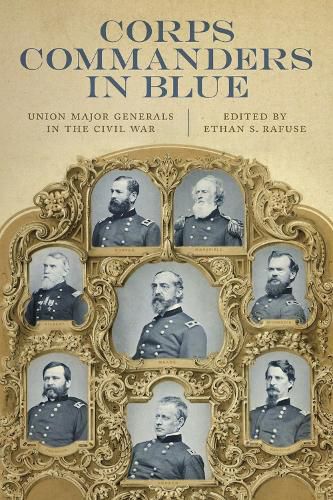Readings Newsletter
Become a Readings Member to make your shopping experience even easier.
Sign in or sign up for free!
You’re not far away from qualifying for FREE standard shipping within Australia
You’ve qualified for FREE standard shipping within Australia
The cart is loading…






The outcomes of campaigns in the Civil War often depended on top generals having the right corps commanders in the right place at the right time. Mutual trust and respect between generals and their corps commanders, though vital to military success, was all too rare: Corps commanders were often forced to exercise considerable discretion in the execution of orders from their generals, and bitter public arguments over commanders' performances in battle followed hard on the heels of many major engagements. Controversies that arose during the war around the decisions of corps and army commanders-such as Daniel Sickles's disregard of George Meade's orders at the Battle of Gettysburg-continue to provoke vigorous debate among students of the Civil War.
Corps Commanders in Blue offers eight case studies that illuminate the critical roles the Union corps commanders played in shaping the war's course and outcome. The contributors examine, and in many cases challenge, widespread assumptions about these men while considering the array of internal and external forces that shaped their efforts on and off the battlefield. Providing insight into the military conduct of the Civil War,
Corps Commanders in Blue fills a significant gap in the historiography of the war by offering compelling examinations of the challenges of corps command in particular campaigns, the men who exercised that command, and the array of factors that shaped their efforts, for good or for ill.
$9.00 standard shipping within Australia
FREE standard shipping within Australia for orders over $100.00
Express & International shipping calculated at checkout
The outcomes of campaigns in the Civil War often depended on top generals having the right corps commanders in the right place at the right time. Mutual trust and respect between generals and their corps commanders, though vital to military success, was all too rare: Corps commanders were often forced to exercise considerable discretion in the execution of orders from their generals, and bitter public arguments over commanders' performances in battle followed hard on the heels of many major engagements. Controversies that arose during the war around the decisions of corps and army commanders-such as Daniel Sickles's disregard of George Meade's orders at the Battle of Gettysburg-continue to provoke vigorous debate among students of the Civil War.
Corps Commanders in Blue offers eight case studies that illuminate the critical roles the Union corps commanders played in shaping the war's course and outcome. The contributors examine, and in many cases challenge, widespread assumptions about these men while considering the array of internal and external forces that shaped their efforts on and off the battlefield. Providing insight into the military conduct of the Civil War,
Corps Commanders in Blue fills a significant gap in the historiography of the war by offering compelling examinations of the challenges of corps command in particular campaigns, the men who exercised that command, and the array of factors that shaped their efforts, for good or for ill.